Tsunamis
Storyboard 
The area where Palos Verdes is located has experienced in the past the most intense earthquake ever recorded worldwide. This event, like many similar ones in previous years, was accompanied by a tsunami that resulted in numerous casualties and the total destruction of inhabited areas.
Therefore, it is crucial not only to understand the probability of another earthquake and tsunami occurring but also the conditions under which the latter would occur. This allows for the development of the project in a way that minimizes its potential impact.
This type of risk is only relevant for properties located near the ocean. If you are in an inland area or at a distance from the ocean that makes it unlikely for a tsunami to occur and reach your property, there is no need to conduct this type of study.
ID:(97, 0)
Mechanism of creation of a tidal wave (tsunami)
Image 
A tsunami is one of the possible effects of seafloor displacement caused by an earthquake.
Before a tsunami occurs, the Earth's crustal plates are shifting, with one plate subducting beneath another. The process of creating a tsunami begins when a section becomes locked and no longer moves relative to the other plate.
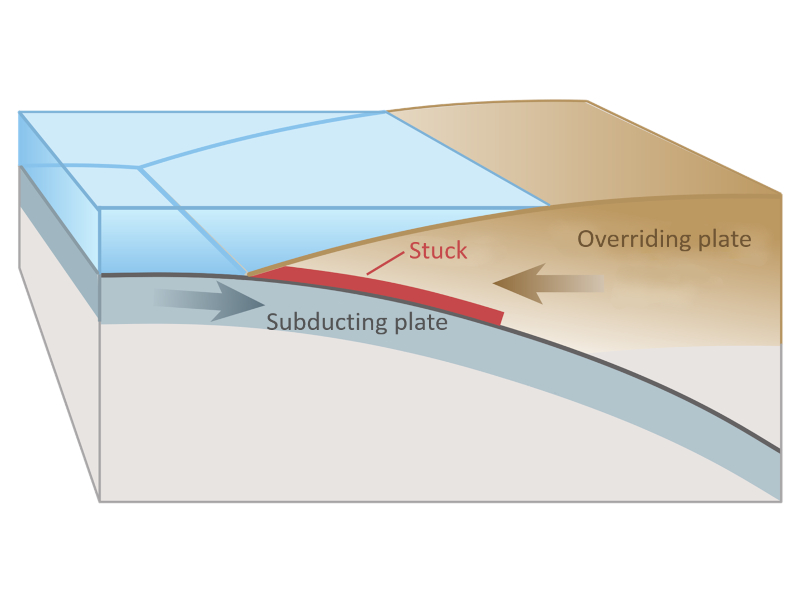
Situational Sticking (Wikipedia)
As the rest of the system continues to move, the locked zone accumulates tension, and the crust begins to uplift:
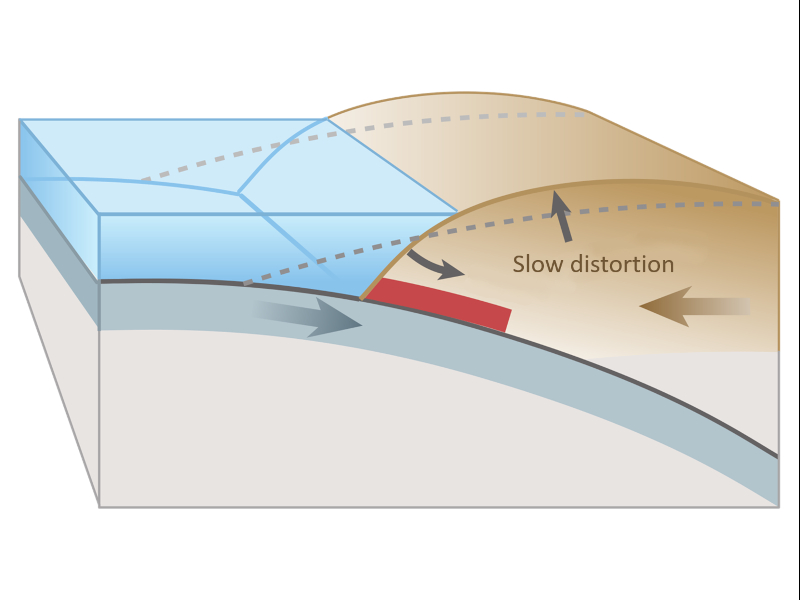
Tension Formation (Wikipedia)
At a later point, the built-up tension in the locked zone becomes so great that it is suddenly released in a violent event, unleashing all the accumulated energy. Part of this energy lifts the seafloor and displaces the water:
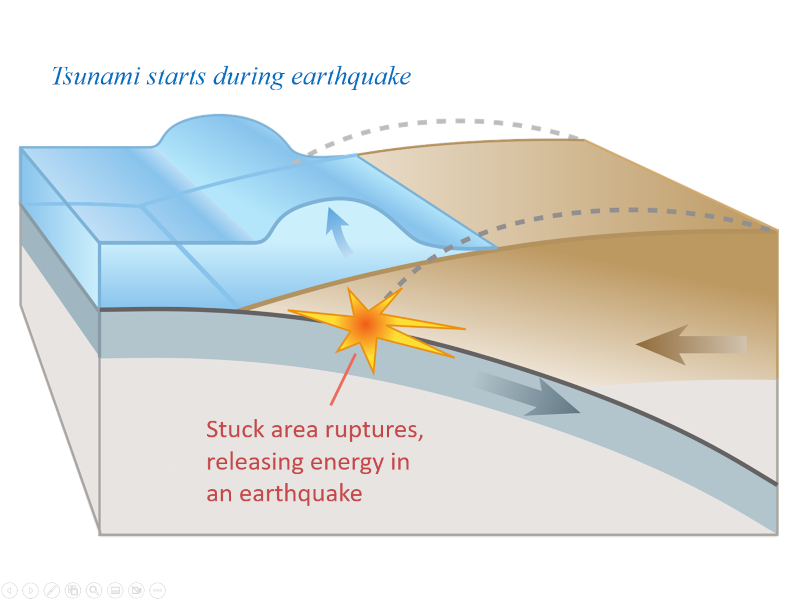
Earthquake, Release of Energy, Earth's Crust Movement (Wikipedia)
The displacement of the water creates a circular wave that travels outward from the epicenter until it reaches the shores, forming a wave several meters high:
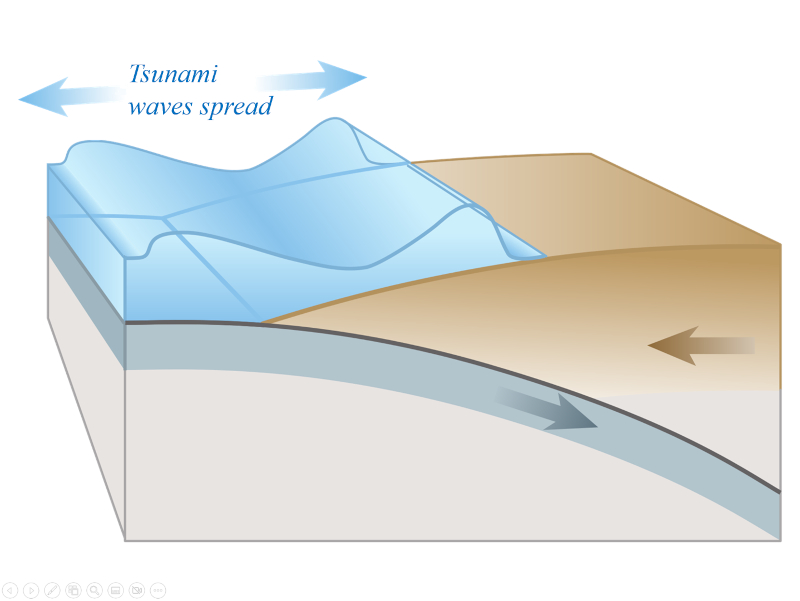
Formation of Two Waves Traveling in Opposite Directions (Wikipedia)
This type of wave is known as a tsunami.
ID:(635, 0)
Tidal wave (tsunami) in Corral
Image 
In 1960, the Valdivia region, the regional capital of the Los Rios Region where Palos Verdes is located, witnessed the most intense earthquake ever recorded in the world.
This earthquake also triggered a tsunami that affected Valdivia, Corral, and even Chaihuín. In the case of Corral, which is located 17 km from Palos Verdes, the wave reached a height of over 10 meters and completely devastated Corral Bajo and Altos Hornos:
In the following images, you can see Corral Bajo before and after the tsunami, following the cleanup:
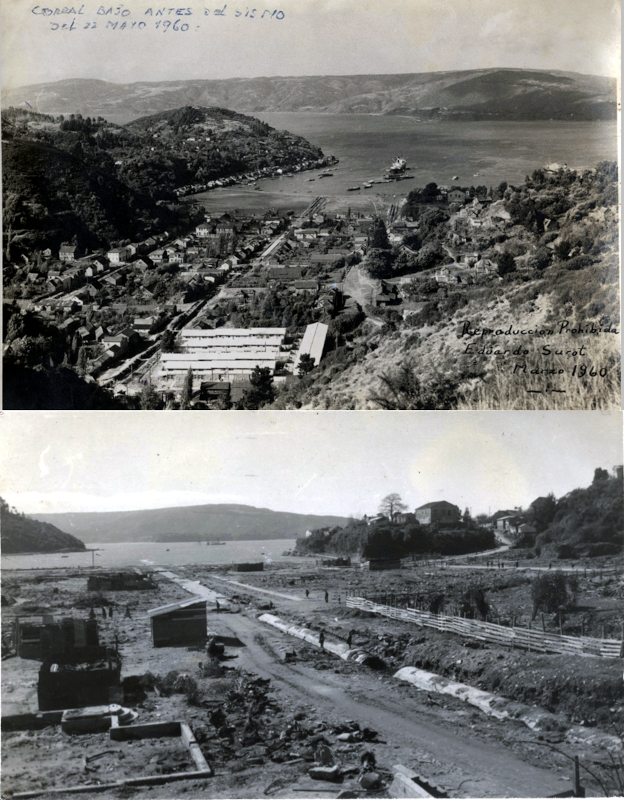
Corral Bajo in 1960 before the tsunami and then after it [1]
The following image shows the same location after the devastation and then the area after cleanup, in colors:
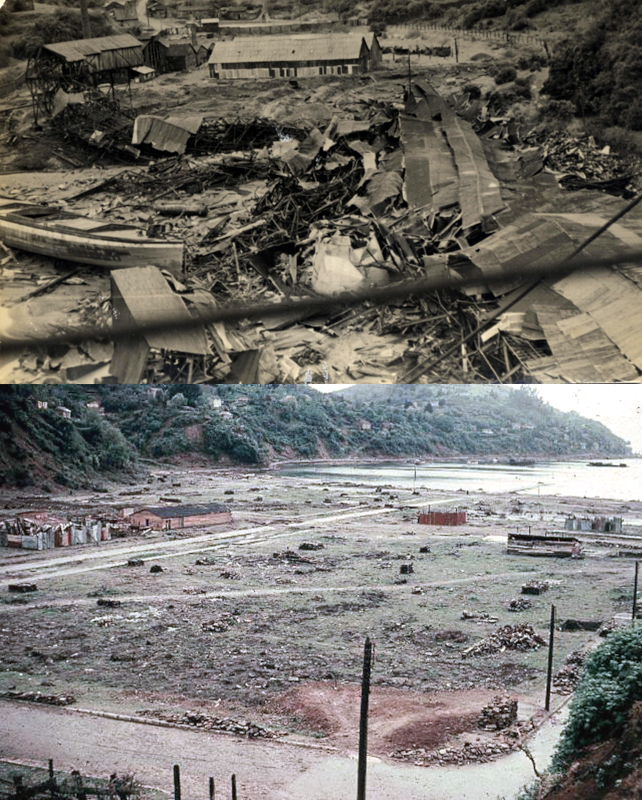
Corral Bajo after the tsunami, before and after cleaning [1]
Additionally, it depicts the destruction of the steelworks in the La Agüada sector:
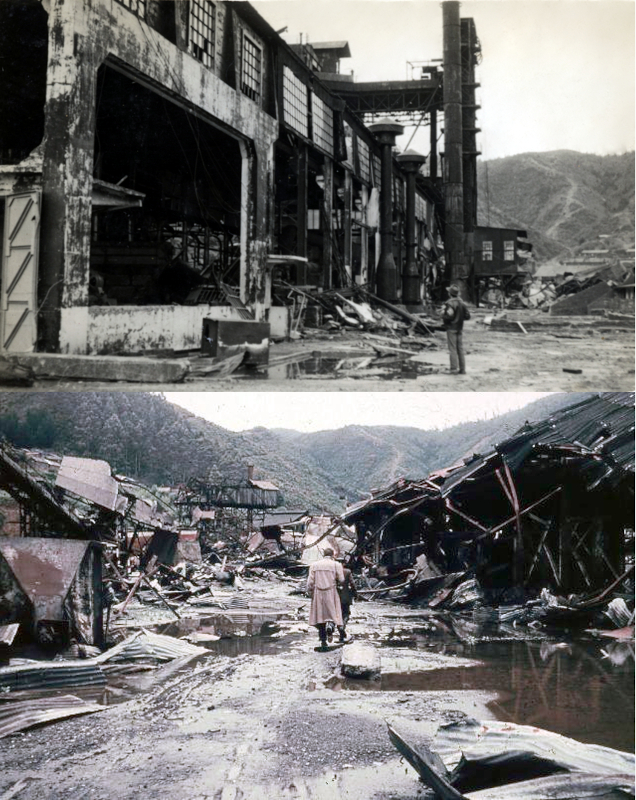
Destruction of the steelworks in the La Agüada sector [1]
The factory was never rebuilt, and Corral lost its role as a port at that time due to the loss of a significant portion of the fleet operated by shipping companies in that area.
[1] Memorias del Siglo XX (https://www.memoriasdelsigloxx.cl/ - image by Sergio Rigoberto Campos Valese) and wikipedia
ID:(634, 0)
Probability of a new tsunami in the area
Image 
Various studies have shown that the great Valdivia earthquake of 1960 is one in a series that has records dating back to the years 1575, 1737, 1837, and the aforementioned 1960 event.
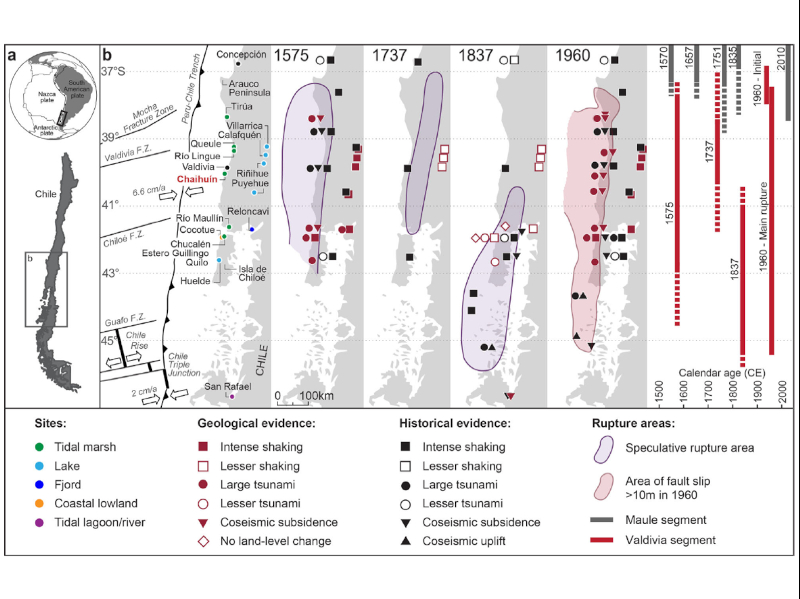
Geographical context of the study location and evidence of historical earthquakes in south-central Chile [1]
This means that on average, there is an earthquake with a corresponding tsunami approximately every 128 years. The standard deviation is 31 years, although it should be noted that the number of events is very limited. In other words,
It is highly likely that a new tsunami will occur in about 65 years, with an uncertainty of around 30 years.
The tsunami that will likely occur could once again devastate the city of Corral unless protective measures are taken.
The question is, what is the risk that Palos Verdes faces.
[1] Geological evidence of an unreported historical Chilean tsunami reveals more frequent inundation", Emma P. Hocking, Ed Garrett, Diego Aedo, Matías Carvajal y Daniel Melnick, Communications Earth & Environmental (2021) 2:24
ID:(636, 0)
Tsunami dynamics
Image 
The direction of the wave generated by an epicenter can vary depending on the underwater topography. Often, this leads to a wave entering the coastal area from directions different from where the wave originated. However, the final direction of the wave depends largely on the topography of the coastal area and is usually similar regardless of the epicenter's location.
In the case of Corral, which is near Palos Verdes, the 1960 tsunami entered the bay and arrived perpendicular to the beach in places like Corral Bajo, Amargos, and Altos Hornos:
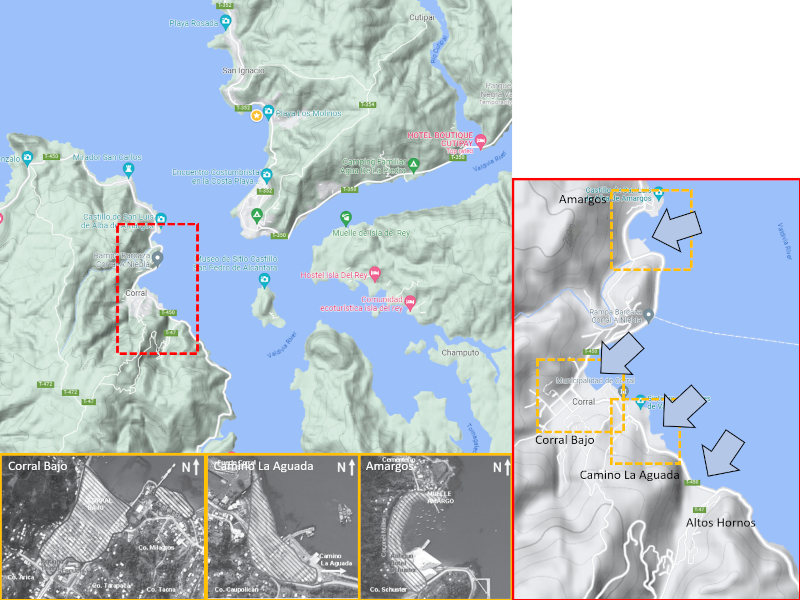
Map showing the location of Corral and the impacted localities [1]
This happened despite the fact that Corral is not directly facing the open sea and is partially protected by Corral Bay.
The water level reached 10 meters, which explains why the wave traveled so far in places like Corral Bajo and Altos Hornos, where the terrain rises.
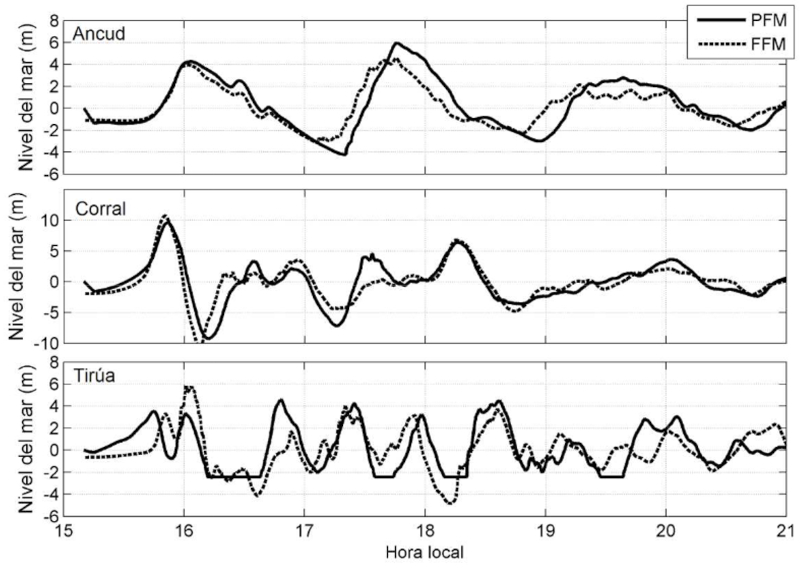
Estimation of sea level over time in Corral and other localities [2]
Therefore, the destruction was extensive, and it is challenging to design effective preventive measures against future tsunamis.
[1] Repoblamiento, actividades productivas y percepción del riesgo en Corral, 50 años después del tsunami de 1960, Patricia Gutiérrez, Fernando Peña-Cortés y Marco Cisternas, Revista de Geografía Norte Grande, 56: 207-221 (2013)
[2] Generación del Tsunami de 1960 en el Sur de Chile, Rafael Aránguiz M., Sociedad Chilena de Ingenieria Hidraulica, XXI Congreso Chileno de Hidráulica (2014)
ID:(637, 0)
Tidal wave (tsunami) in Chauhuín
Image 
Palos Verdes is only 5 km away from Chaihuín, which also suffered the impact of a tsunami in 1960. Being so close to Palos Verdes allows us to study in more detail the likely effects on the future construction.
Studies conducted [1] show that the wave largely impacted perpendicular to the beach, surpassing the dune area, the river delta, and creating a marsh on the opposite side of the Chaihuín River:
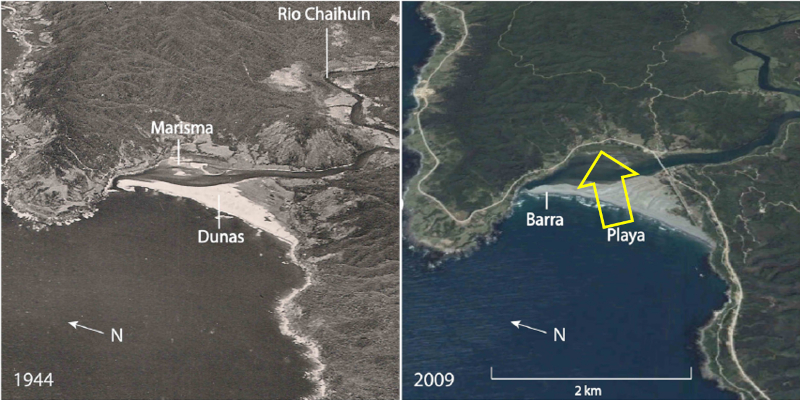
Comparison of Chaihuín Bay between 1944 and 2009, showing the wetland created by the 1960 tsunami [1]
This can be verified by obtaining soil samples along the direction the tsunami traveled, showing that the sediments contain remnants of marine soil and dunes:
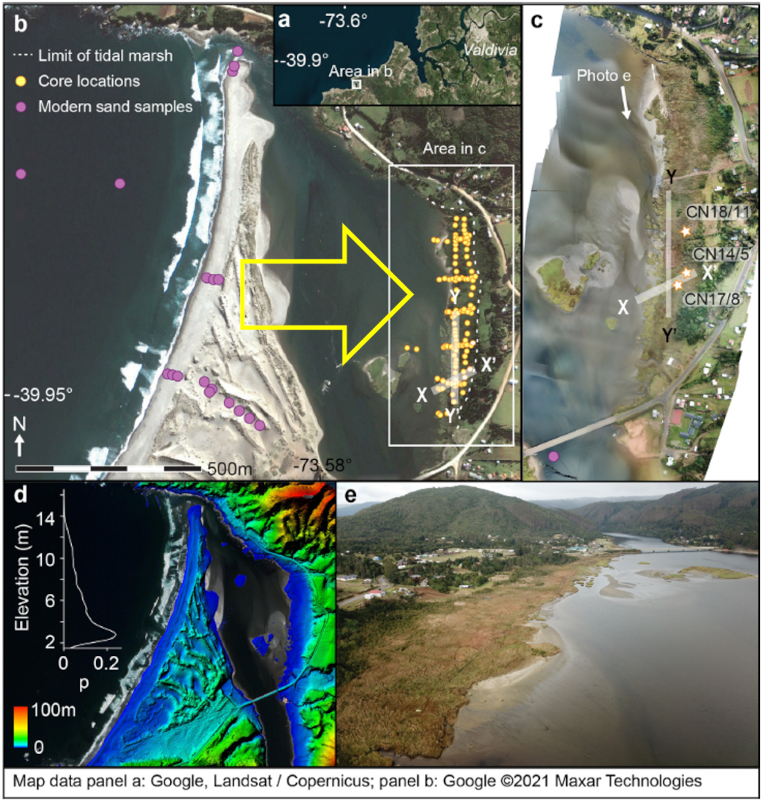
Location of the samples extracted for the reconstruction of the 1960 tsunami [1]
In general, it can be concluded that tsunamis in Chaihuín impact perpendicular to the beach and have similar heights to those in Corral, allowing them to surpass the dunes and reach the other side of the river.
[1] Origen y distribución de depósitos de tsunami en la marisma de Chaihuín (40° S/73,5° O), Chile, Diego Aedo, Daniel Melnick, Ed Garrett, Mario Pino, Andean Geology 48 (1): 125-152. January, 2021
ID:(638, 0)
Probable effects on Palos Verdes
Image 
If you study the official information [1], you will see that the Palos Verdes area is classified as a low tsunami risk zone. Only areas in Chaihuín (Chaihuín Bay and Chaihuín Point):
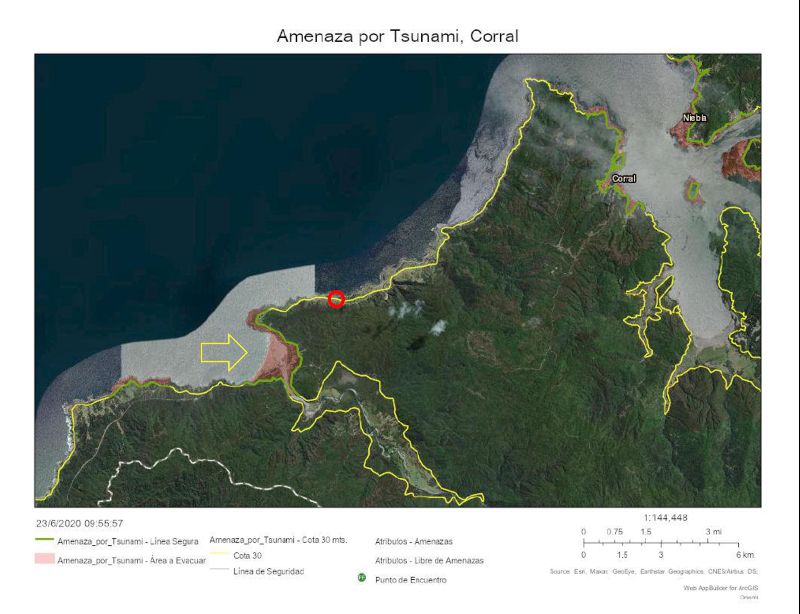
Government-generated tsunami hazard map
The reason for this classification is related to the direction in which the water will travel in the next tsunami:
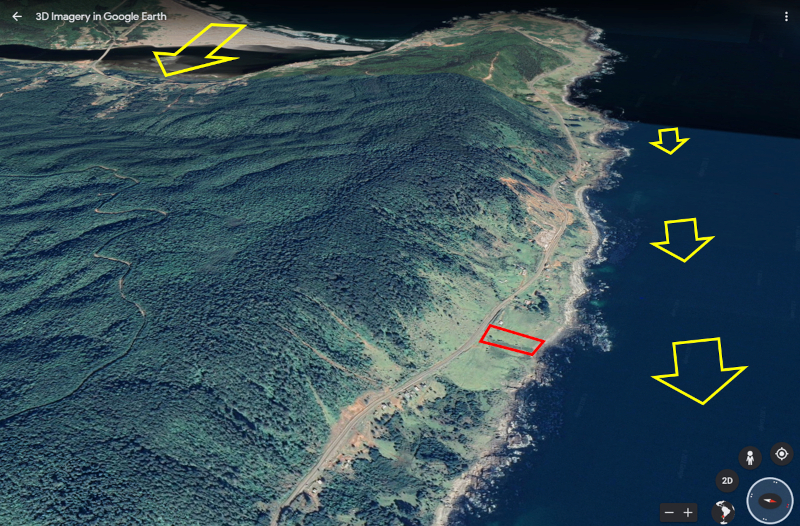
Likely parallel coastal flow in the upcoming tsunami.
In other words, it is likely that the tsunami will travel parallel to the coast without reaching inland. However, it should be noted that the water can still reach a level of more than 5 meters (estimated based on a turbulent current profile), which would inundate the lower-lying areas of Palos Verdes.
[1] Oficina Nacional de Emergencia (ONEMI), Visor Chile Preparado, 2020.
ID:(639, 0)
Tsunami measures
Image 
Regarding the tsunami risk, the following conclusions can be made:
It is highly likely that a new tsunami will occur between 2057 and 2119, which could result in the destruction of Corral and Chaihuín once again.
However, for Palos Verdes:
The wave is expected to only reach the lower parts of the terrain, potentially carrying away everything in that area.
Therefore, it is crucial to:
Avoid constructing buildings in areas with elevations lower than 10 meters above sea level.
Ensure that structures located between 10 to 20 meters above sea level are capable of withstanding the water forces moving from east to west.
Although the probability of the area being affected is low, it is advisable to evacuate to a location at least 30 meters above sea level, which is approximately at the street level.
ID:(640, 0)
